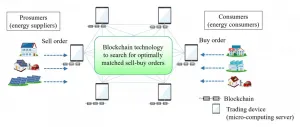(Press-News.org) Researchers looked at neurons within the basal ganglia, a part of the brain that, when damaged, can severely impact a person's motor ability, making seemingly simple reaching-and-grasping tasks near impossible
They focused on a large group of neurons, which has two distinct types - D1 direct striatal output neurons and D2 indirect output neurons
These neurons are implicated in the development of Parkinson's and Huntington's - neurodegenerative diseases that result in the progressive degeneration or death of nerve cells
In this research, mice were trained to reach for and grasp a chocolate pellet, and optical methods were used to either excite or inhibit their D1 or D2 neurons
The researchers found that both types of neurons were necessary for performing the task, with D1 neurons providing the early part of the movement and D2 neurons providing the final approach to the target
Research conducted at the Okinawa Institute of Science and Technology Graduate University (OIST), has looked at the importance of specific neurons for seemingly simple, day-to-day tasks that involve reaching for and grasping objects. The study was published in Cell Reports.
"We focused on the neurons located in the basal ganglia," said Professor Gordon Arbuthnott, who leads OIST's Brain Mechanisms for Behavior Unit. "This part of the brain is connected to the cerebral cortex, which is involved in motor function. And neurons, or nerve cells, are specialized cells that act as the building blocks of the nervous system - they connect input from the outside world to movement in our muscles."
Patients that suffer from damage to the basal ganglia can have their motor abilities severely impacted, making daily reaching-and-grasping tasks, like picking up a cup of coffee or putting on a jacket, near impossible.
"We know that interruptions to these basal ganglia neurons are involved in the development of diseases like Parkinson's and Huntington's, but the exact cellular mechanisms behind this isn't properly understood," Professor Arbuthnott went on to explain.
The neurons in question are striatal spiny projection neurons, a large group that contributes to smooth motor function. There are two distinct types - D1 direct striatal output neurons, which connect directly with the output of the basal ganglia, and D2 indirect output neurons, which take a longer route via other areas of the brain. Depending on a person's behavior, different groups made up of different compositions of these two neurons will form. Most groups have both D1 and D2 neurons although there are exceptions, with some groups only having one. Thus, it's a dynamic system where the two different types work together. Previous research has indicated that, for tasks involving movement, the D1 neurons give the 'go' signal whereas the D2 neurons give the 'stop' signal. The researchers decided to change the activity of each type independently, to test this idea.
To perform the experiment, mice were trained to reach through an opening in their chamber and grasp a chocolate food pellet. Failure to retrieve the pellet was classed in one of three ways. An 'initial' error occurred when the mouse couldn't get their paw through the opening of their chamber. A 'final' error was when a mouse's paw ended in the wrong place after it crossed the opening. And a 'grasp' error was when the mouse's paw made it to the pellet, but they were unable to pick it up.
When mice with both D1 and D2 neurons working as normal were trained in this task, they were most likely to fail with the grasp error, which occurred in more than half the failures. With this in mind, the researchers used optical methods so that either D1 neurons or D2 neurons could be excited or inhibited by light.
The researchers found that both exciting and inhibiting the D1 type resulted in a significant decrease in the success rate of treat retrieval, and that, proportionately, the number of failures from the 'initial' error increased.
In contrast, exciting the D2 type also resulted in a significant decrease in the success rate but, this time, it was the 'final' error that increased proportionately.
But, interestingly, when the D2 types were inhibited, the success rate of treat retrieval increased.
"We have several ideas as to why this might have occurred," said Professor Arbuthnott. "If we imagine that a small group of D2 neurons is enough to reach the target then exciting all the D2 cells in the area might make the small group get lost in the noisy activity of the many, while inhibiting the large group could leave behind just the most strongly excited neurons, which can then effectively guide the mouse's behavior."
The results found that both types were necessary for the smooth motor function of all movement. The mice have trouble with the starting part of the movement without the D1 cells; and, in most cases, the pellet cannot be retrieved if the D2 cells aren't working correctly. However, the stop-and-go theory was not supported by this study as, although D1 cells were found to be necessary for controlling the initial part of the reach, the researchers found that D2 cells were actually needed for aiming for the treat, rather than stopping the task.
"This study has helped us understand more about how our brains work and contributes to the body of research that will one day make finding a cure to neurodegenerative diseases possible," said Professor Arbuthnott. "With Parkinson's disease, we're getting good at fixing the symptoms, but we need to get to the root of the disease. In the meantime, understanding how neurons are involved in movement control will help to solve the problems facing patients on a daily basis."
INFORMATION:
Biology - Volcanic microbes
Oak Ridge National Laboratory contributed to an international study that found almost 300 novel types of microbes living near a deep sea volcano. These microbes, which could be used in biotechnology, reveal new insights about their extreme underwater environment.
Two distinct communities of heat-loving and many acid-loving microbes live near Brother's Volcano, located about 200 miles northeast of New Zealand and 6,000 feet underwater. Known as extremophiles, these microbes thrive in water heated by magma and hydrothermal vents.
Though they live close to one another, the microbial communities reflect differences in water chemistry and temperature from geological ...
Half of all young people treated for severe obesity have neuropsychiatric problems, according to a new study by researchers from Lund University and Gothenburg, Sweden, among others. Two thirds of the teens suffered from some type of mental health problem, as reported by themselves or their parents.
Both obesity and mental illness have increased among young people during the 2000s. Researchers have long observed a connection between obesity and ADHD/depression/eating disorders, but it has seldom been studied.
The present study involved 48 teenagers (73% girls), ...
People on a low-fat, plant-based diet ate fewer daily calories but had higher insulin and blood glucose levels, compared to when they ate a low-carbohydrate, animal-based diet, according to a small but highly controlled study at the National Institutes of Health. Led by researchers at the National Institute of Diabetes and Digestive and Kidney Diseases (NIDDK), the study compared the effects of the two diets on calorie intake, hormone levels, body weight, and more. The findings, published in Nature Medicine, broaden understanding of how restricting dietary carbohydrates or fats may impact health.
"High-fat foods have been thought to result in excess calorie intake because they have many calories per bite. Alternatively, high-carb ...
Scientists from the Joint Institute for High Temperatures Russian Academy of Sciences (JIHT RAS) and Moscow Institute of Physics and Technology (MIPT) have experimentally confirmed the presence of an intermediate phase between the crystalline and liquid states in a monolayer dusty plasma system. The theoretical prediction of the intermediate - hexatic - phase was honoured with the Nobel Prize in Physics in 2016: the prize was awarded to Michael Kosterlitz, David Thouless and Duncan Haldane with the formulation "for theoretical discoveries of topological phase transitions and topological phases of matter."
In a scientific article in the journal Scientific Reports, the JIHT RAS scientists published their observations ...
A Tokyo Tech research team led by Specially Appointed Professor Takuya Oda of the Institute of Innovative Research and Professor Keisuke Tanaka of the School of Computing, in collaboration with Mitsubishi Electric Corporation, has developed a new technology an original blockchain[1] technology that can optimize peer-to-peer (P2P) energy trading[2]. The technology is expected to contribute to more effective use of surplus electricity from renewable energy by creating trading environments that flexibly respond to shared trading needs, particularly to ...
DANVILLE, Pa. - An analysis of data collected from patients treated for ischemic stroke at Geisinger shows no disparity in outcomes based solely on sex.
Various studies have suggested that women are disproportionately affected by stroke and may have poorer stroke outcomes. Women have a longer life expectancy than men and, therefore, likely have an increased lifetime risk of stroke. Women tend to be older than men at the time of stroke and have a higher pre-stroke degree of disability or dependence in their daily activities, which may contribute to worse outcomes. Rural populations may also have a higher risk of stroke based on a greater incidence of conditions ...
People with anxiety and depression are more likely to report an increase in drinking during the COVID-19 pandemic than those without mental health issues, according to a new study by researchers at NYU School of Global Public Health published in the journal Preventive Medicine. While drinking grew the most among younger people, older adults with anxiety and depression saw a sharper increase in their risk for harmful alcohol use.
"This increase in drinking, particularly among people with anxiety and depression, is consistent with concerns that the pandemic may be triggering an epidemic of problematic ...
Genetic rewiring could have driven an evolutionary explosion in the shapes, sizes and adaptations of cichlid fish, in East Africa's answer to Darwin's Galapagos finches.
Published in BMC Genome Biology, an Earlham Institute (EI) study, with collaborators at the University of East Anglia (UEA) and Wisconsin Institute for Discovery, shows that 'genetic rewiring' at non-coding regions - rather than mutations to protein-coding regions of genes - may play an important role in how cichlid fish are able to rapidly adapt to fill a staggeringly wide range of environmental niches in the East African Rift lakes.
The results ...
ATLANTA - JANUARY 19, 2021 - A new study finds that alcohol consumption accounts for a considerable portion of cancer incidence and mortality in all 50 states and the District of Columbia. The article, which appears in Cancer Epidemiology, states that the proportion of cancer cases attributable to alcohol consumption ranged from a high of 6.7% in Delaware to a low of 2.9% in Utah. Similarly, Delaware had the highest proportion of alcohol-related cancer deaths (4.5%) and Utah had the lowest (1.9%).
This study conducted by Farhad Islami, MD, PhD, and colleagues at the American Cancer Society is the first to estimate contemporary proportions and counts of alcohol-attributable ...
Psoriasis is a chronic inflammatory skin disease characterized by erythematous (red) patches and plaques. In some patients, psoriasis may be associated with comorbidities such as arthritis, obesity, diabetes, cardiovascular diseases, hyperlipidemia, or depression. Psoriasis lesions can occur on the scalp and face, in addition to all other areas of the body, causing considerable physical discomfort and psychosocial trauma from the stigma surrounding appearance defects.
More than 90% of patients with psoriasis have what is called psoriasis vulgaris, which is characterized ...





